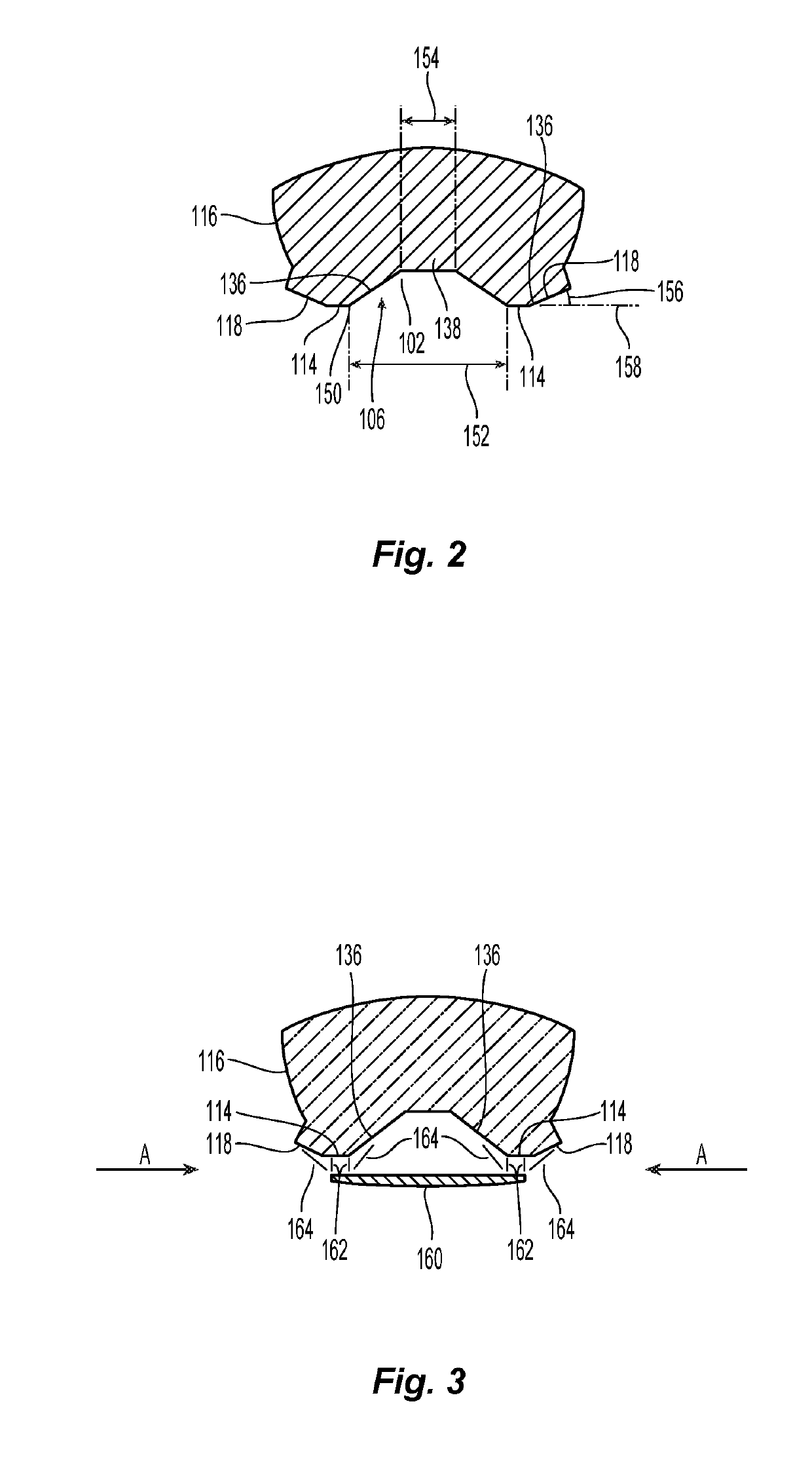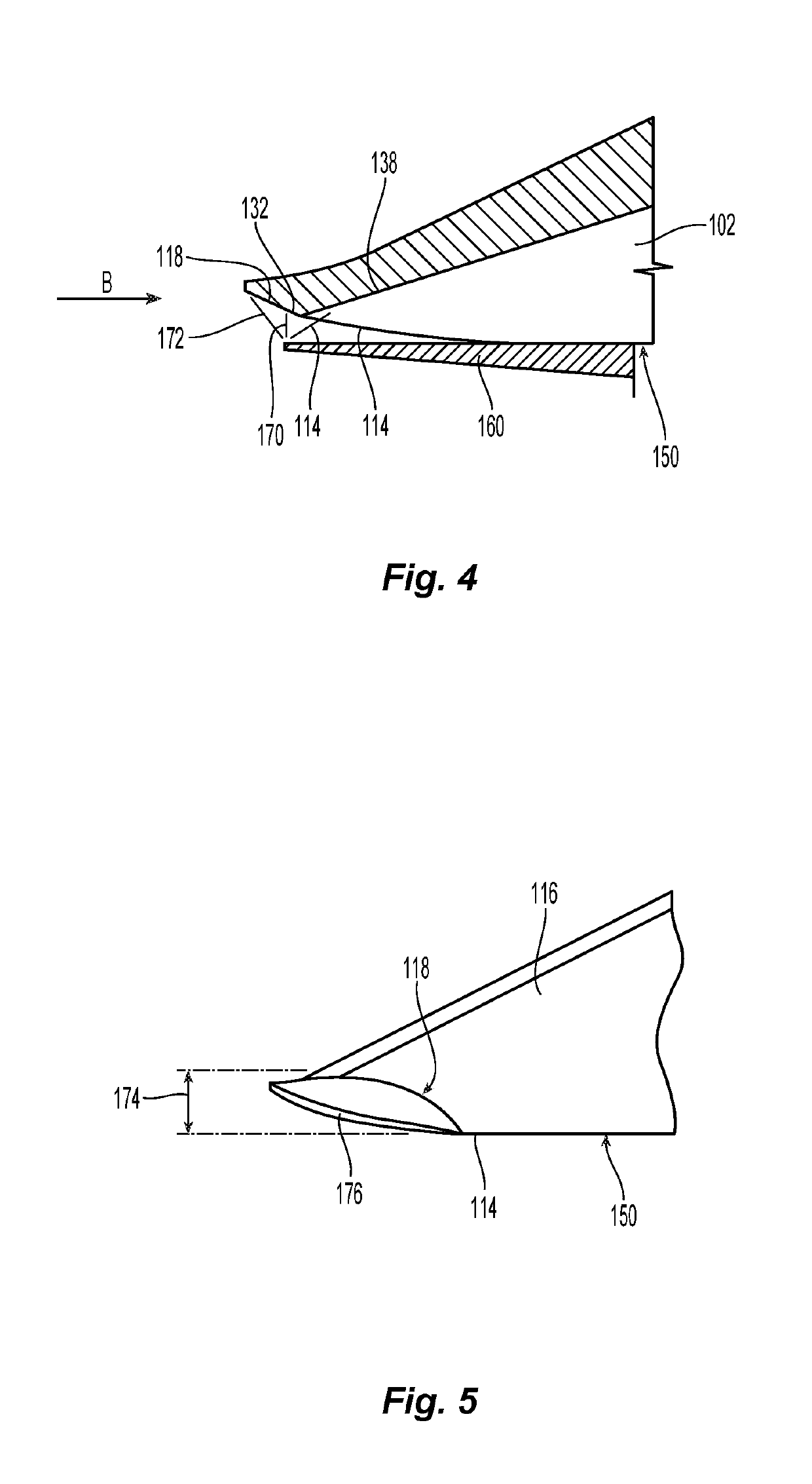Flanged tone chamber window for woodwind mouthpieces
a technology of woodwind instruments and mouthpieces, which is applied in the direction of wind instruments, instruments, musical instruments, etc., can solve the problems and achieve the effect of reducing the “q” of the oscillating system and modifying the shape of the tone chamber
- Summary
- Abstract
- Description
- Claims
- Application Information
AI Technical Summary
Benefits of technology
Problems solved by technology
Method used
Image
Examples
Embodiment Construction
[0022]Referring initially to FIG. 1, an exemplary embodiment of a woodwind mouthpiece 100 in accordance with the present invention is illustrated. The view of the mouthpiece is from the side of the mouthpiece configured to engage a reed. This side of the mouthpiece is called the bottom of the mouthpiece as this side is positioned pointing downward or on the bottom when the mouthpiece is attached to a saxophone or clarinet. The woodwind mouthpiece includes a tone chamber 102 in communication with a central bore 104 running through the mouthpiece.
[0023]The mouthpiece also includes a window 106 exposing the tone chamber 102 disposed within the mouthpiece. The mouthpiece includes a table 108 at a first end of the window and a tip rail 110 at a second end of the window opposite the first end. A pair of side rails 112 extend from the table and run along opposite sides of the window from the table to the tip rail. Each side rail includes a side rail top surface 114. The window 106 is a gen...
PUM
 Login to View More
Login to View More Abstract
Description
Claims
Application Information
 Login to View More
Login to View More - R&D
- Intellectual Property
- Life Sciences
- Materials
- Tech Scout
- Unparalleled Data Quality
- Higher Quality Content
- 60% Fewer Hallucinations
Browse by: Latest US Patents, China's latest patents, Technical Efficacy Thesaurus, Application Domain, Technology Topic, Popular Technical Reports.
© 2025 PatSnap. All rights reserved.Legal|Privacy policy|Modern Slavery Act Transparency Statement|Sitemap|About US| Contact US: help@patsnap.com



